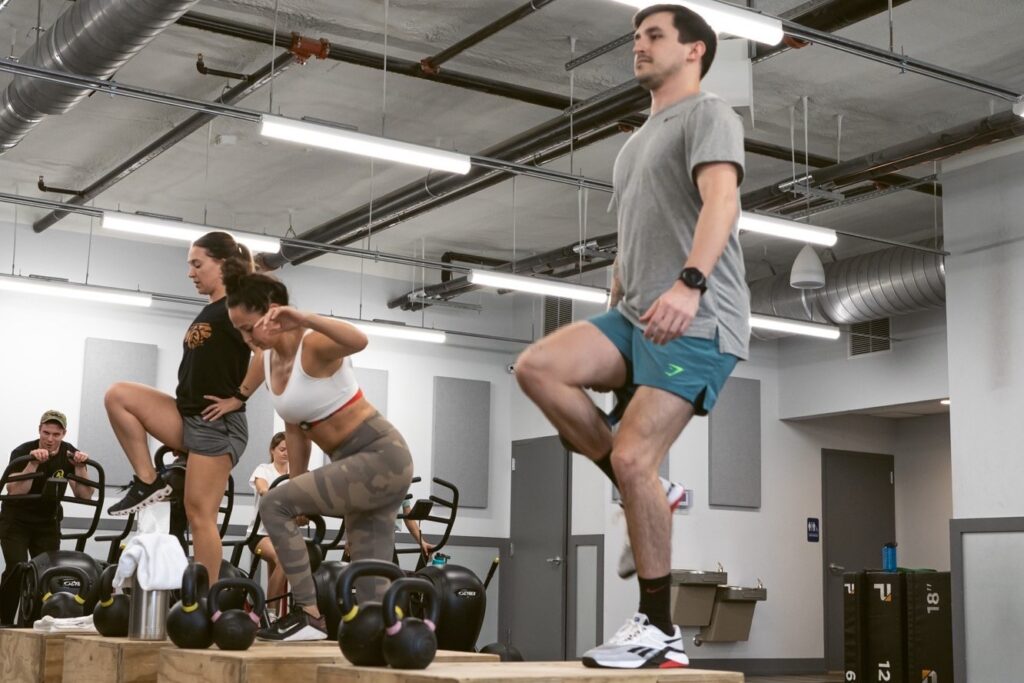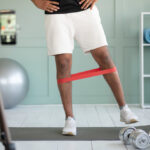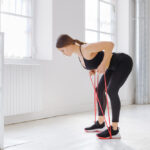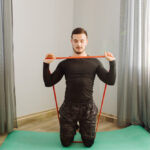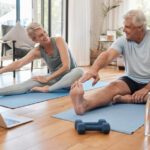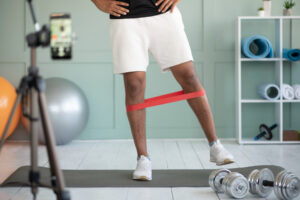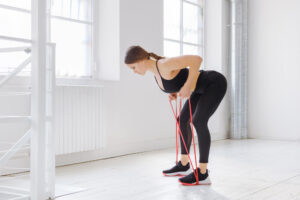Let’s face it—our bodies don’t always cooperate as we grow older. Joints start to creak, muscles lose their strength, and even getting up from a chair can feel like a challenge some days. This is where the magic of functional movement exercises comes into play.
Functional movement exercises are all about training the body to handle real-life situations. Forget those complicated gym machines that isolate muscles in ways you’d never use them outside a workout. Functional exercises mimic the natural movements we perform every day, like squatting, reaching, pushing, and pulling. The goal? To make sure we can continue to do these activities with ease and confidence, no matter what age we are.
The benefits of functional movement exercises for aging adults
These exercises are not just about building muscle or losing weight; they’re about enhancing the way our bodies move and function. By focusing on exercises that improve balance, strength, flexibility, and coordination, functional movement training equips us to handle life’s daily tasks more efficiently—whether that’s lifting groceries, gardening, or simply getting up from a chair without a second thought.
For aging adults, this is crucial. It’s the difference between living independently and relying on others, between feeling confident in one’s movements and fearing a fall. Let’s explore the key benefits of incorporating functional movement exercises into a regular fitness routine.
Enhances daily living
One of the most significant advantages of functional movement exercises is their direct applicability to everyday life. Unlike traditional strength training that often focuses on isolated muscle groups, functional exercises mimic the actions we perform every day. Think of movements like squatting to sit down, reaching up to grab something from a shelf, or walking around the neighborhood. These exercises train multiple muscle groups in tandem, improving strength and flexibility in a way that’s directly relevant to real-world tasks.
For aging adults, this has a profound impact on maintaining independence and quality of life. By improving the ability to perform daily activities with ease, functional exercises reduce the reliance on others for basic tasks. This means more freedom to live life on your terms, whether that’s enjoying hobbies, playing with grandchildren, or simply moving around the house without assistance.
Improves balance and coordination
Falls are one of the most significant risks for aging adults, often leading to serious injuries and a decline in overall health. Functional movement exercises play a critical role in enhancing balance and coordination, which are essential for preventing falls. By focusing on exercises that improve core stability, proprioception (the body’s ability to sense its position in space), and agility, these workouts help develop a more robust, responsive body.
Research supports this connection. According to a study, seniors who exercise regularly can reduce their fall risk significantly. Another study highlighted in the Tufts University School of Medicine showed that exercise programs emphasizing balance and coordination could reduce fall incidents by up to 24%.
Increases strength and bone density
Aging often comes with a natural decline in muscle mass and bone density, which can lead to frailty, osteoporosis, and decreased mobility. Functional movement exercises are an effective way to counter these changes. By engaging multiple muscle groups in weight-bearing activities, these exercises help maintain and even increase muscle mass. Additionally, they apply stress to bones in a healthy way, promoting bone density and reducing the risk of fractures.
Strengthening muscles and bones is crucial for aging adults. Strong muscles help support and protect joints, reducing the risk of arthritis and other degenerative conditions. Meanwhile, healthy bones are less prone to breaks, which can lead to long recovery times and a potential decline in overall health. Keeping both in check through functional training is a key factor in preserving mobility and an active lifestyle.
Key functional exercises for aging adults
These exercises are designed to mirror everyday movements, helping to enhance overall mobility and reduce the risk of injury.
Squats
This is one of the most effective functional exercises because it mimics the natural movement of sitting and standing up, an action performed countless times a day. This exercise primarily targets the lower body muscles, including the quadriceps, hamstrings, and glutes, while also engaging the core for stability.
Variations for different fitness levels
- Basic squat: Stand with feet shoulder-width apart and slowly lower your body as if sitting back into a chair. Keep your chest up and your knees behind your toes. Return to standing and repeat.
- Chair squat: For those who need extra support, use a chair. Sit down and stand up repeatedly to perform a similar movement. This variation is great for beginners or those with limited mobility.
- Wall squat: Stand against a wall and slide down into a squat position, holding for a few seconds. This version helps build endurance and strength, especially for those looking for a lower-impact option.
Step-ups
Step-ups are fantastic for strengthening the leg muscles and improving balance, which is crucial for preventing falls. This exercise replicates the action of climbing stairs, making it highly relevant for daily activities.
How to perform step-ups
Find a stable bench or step that’s about knee height. Step up onto the platform with one foot, press through your heel, and bring the other foot up to meet the first. Step back down, one foot at a time, and repeat. You can alternate leading legs to ensure balanced strength development.
For beginners or those with knee concerns, using a lower step or holding onto a railing for support can make this exercise more accessible. Adding light weights or increasing step height can provide a challenge for those who are more advanced.
Light weight lifting
Resistance training with light weights is crucial for maintaining muscle health as we age. Light weight lifting helps prevent the natural decline in muscle mass and strength that comes with aging, supporting better posture, joint stability, and overall functionality.
How to get started
Begin with weights that are comfortable and manageable, typically ranging from 1 to 5 pounds. Exercises such as bicep curls, shoulder presses, and tricep extensions can be performed with light weights to target different muscle groups. Always focus on proper form over heavier weights to prevent injury. Even resistance bands can be an excellent alternative for those who prefer a gentler approach. If you don’t have weights, calisthenics can be a good alternative.
Stretching and flexibility work
Maintaining flexibility through regular stretching is vital for aging adults to prevent injuries and sustain a full range of motion. Stretching exercises help elongate muscles and tendons, reducing stiffness and improving mobility.
Effective stretching routines
Incorporate stretches that focus on all major muscle groups, holding each stretch for at least 20-30 seconds. Key stretches include hamstring stretches, calf stretches, shoulder stretches, and torso twists. Dynamic stretches, like arm circles and leg swings, can also be beneficial as part of a warm-up routine. Yoga and tai chi are excellent ways to integrate flexibility and balance work into a fitness regimen, offering both physical and mental benefits.
Final thoughts
Functional movement exercises are a game changer for aging adults looking to maintain their independence, strength, and overall quality of life. By focusing on movements that mirror everyday activities, these exercises not only help build and preserve muscle strength but also enhance balance, flexibility, and cognitive function. The benefits extend far beyond just physical health; they empower individuals to stay active, confident, and self-reliant as they age.

